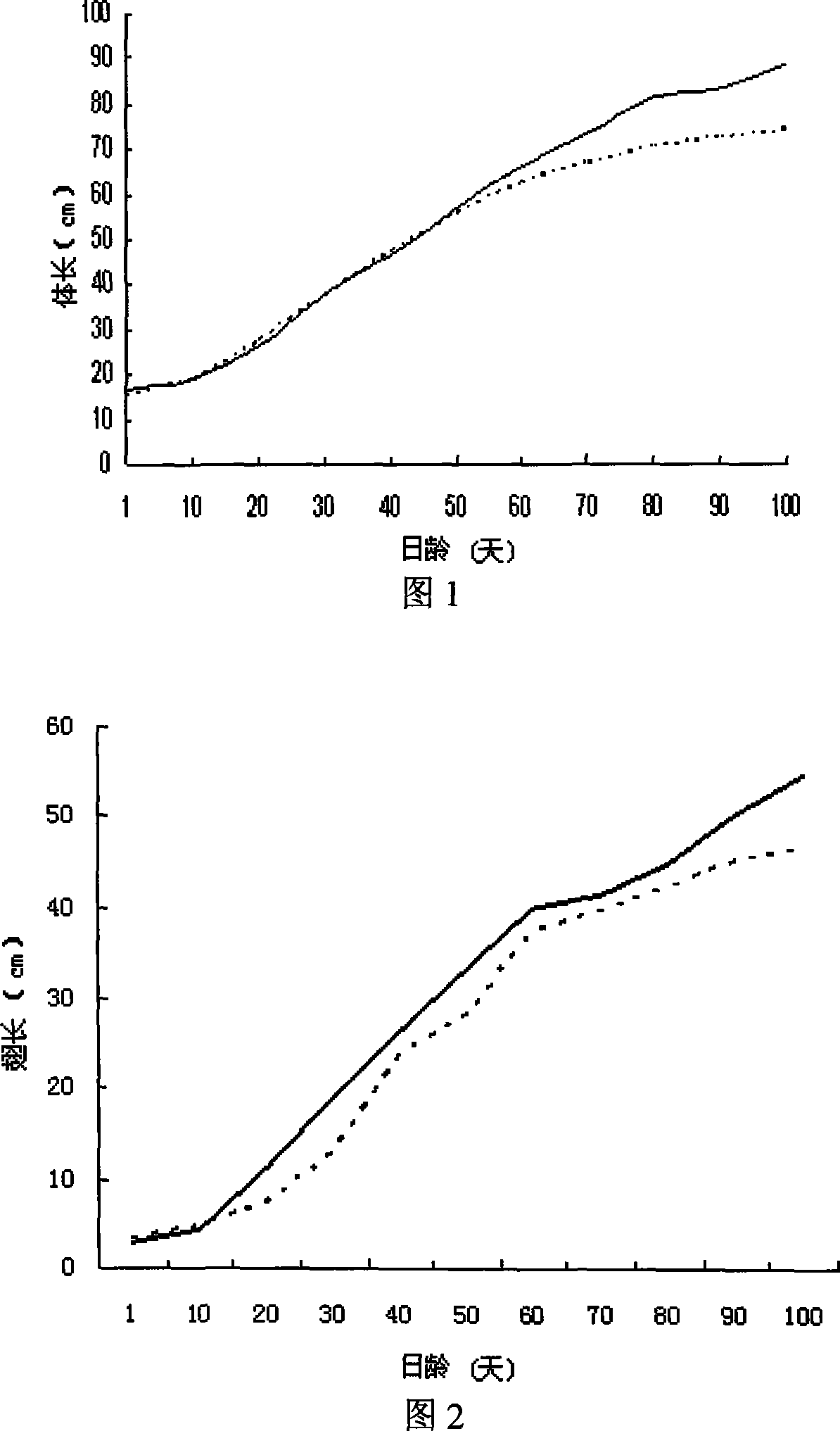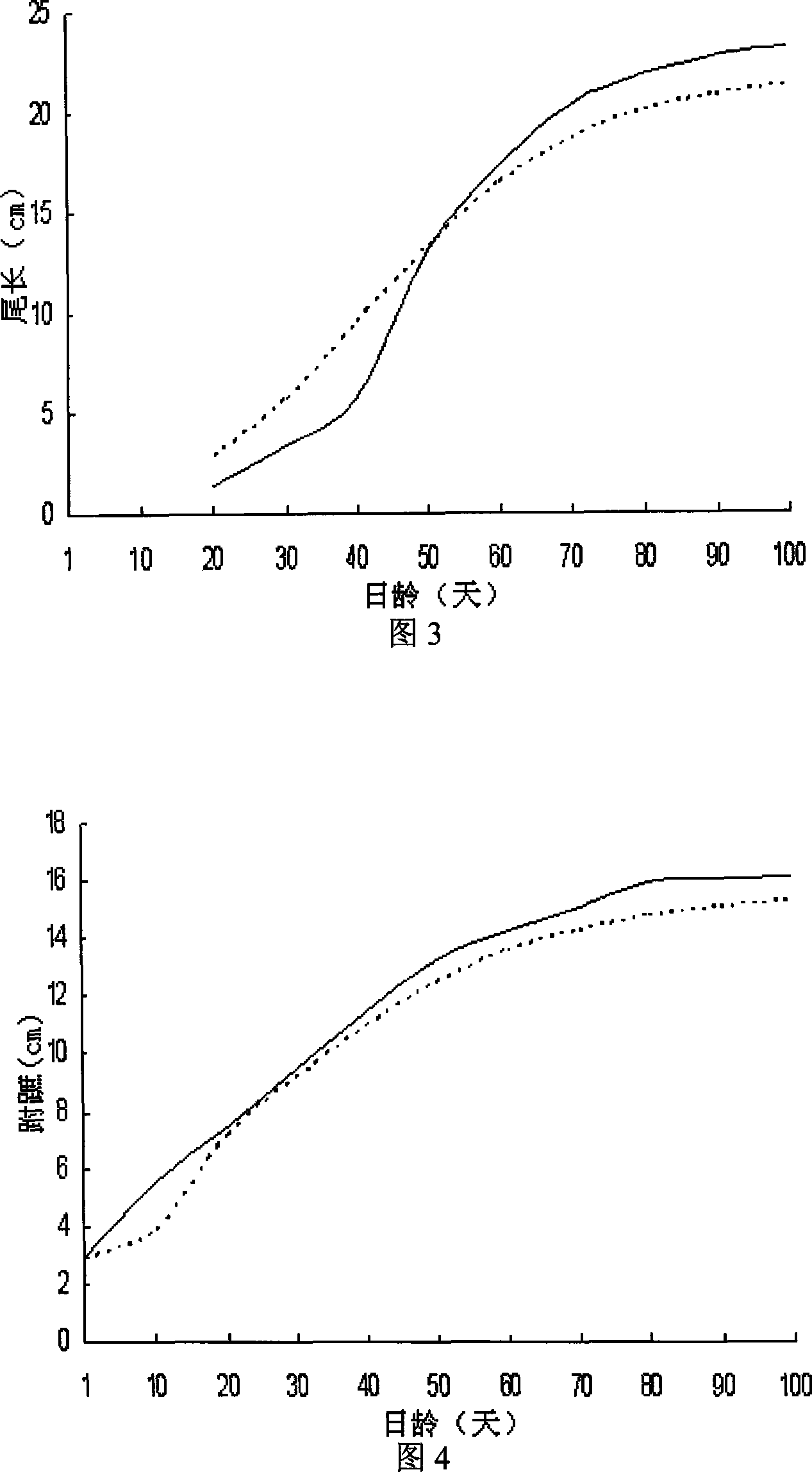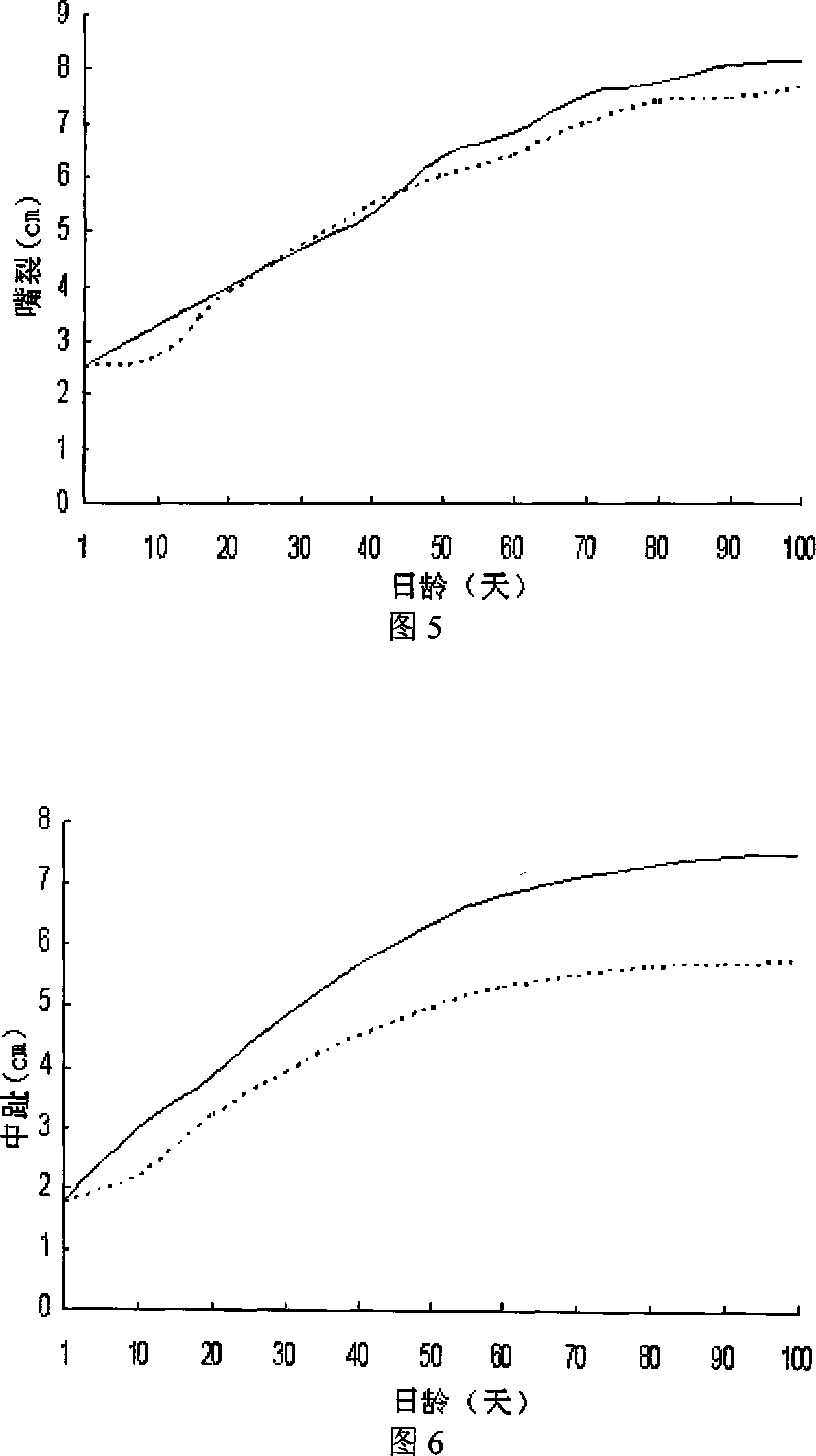Method for artificial incubation and brooding of bustard and squab feedstuff for bustard
An artificial hatching and great bustard technology, applied in the field of chick feed, can solve the problems of low hatching rate, low survival rate and chick death of Great Bustard, and achieve the effects of high hatching rate, high survival rate and rich nutrition.
- Summary
- Abstract
- Description
- Claims
- Application Information
AI Technical Summary
Problems solved by technology
Method used
Image
Examples
specific Embodiment approach 1
[0017] Specific implementation mode 1: In this embodiment, the artificial incubation of the great bustard is divided into four periods: the early incubation period, the middle incubation period, the late incubation period and the hatching period; the first to 11th days of incubation are the early incubation period; the 12th to 17th incubation period Days is the middle stage of hatching; from the 17th day of incubation to when the embryo enters the air chamber is the late hatching stage, and when the embryo enters the air chamber until it is completely hatched is the hatching stage; the early stage of hatching, the middle stage of incubation and the late stage of hatching are carried out in the incubator, and the temperature of the incubator is 36-37.8 ℃, humidity 50%-60%; the hatching period is carried out in the hatching box, the temperature of the hatching box is 36-37 ℃, and the humidity is 60%-65%; the eggs are turned every 2 hours in the early stage of hatching and the midd...
specific Embodiment approach 2
[0024] Embodiment 2: The difference between this embodiment and Embodiment 1 is: the great bustard embryo can make a cry when it enters the air chamber. Others are the same as the first embodiment.
[0025] In this embodiment, the sound of the bustard embryo in the air chamber changes from weak to strong with time, and the sound is loud, and the rhythm of the active shell pecking sound is strong, indicating that the embryo is well developed, which is a normal phenomenon.
specific Embodiment approach 3
[0026] Embodiment 3: The difference between this embodiment and Embodiment 1 is that artificial midwifery is required when the call or pecking sound of a great bustard chick changes from strong to weak at the hatching stage. Others are the same as the first embodiment.
PUM
 Login to View More
Login to View More Abstract
Description
Claims
Application Information
 Login to View More
Login to View More - R&D
- Intellectual Property
- Life Sciences
- Materials
- Tech Scout
- Unparalleled Data Quality
- Higher Quality Content
- 60% Fewer Hallucinations
Browse by: Latest US Patents, China's latest patents, Technical Efficacy Thesaurus, Application Domain, Technology Topic, Popular Technical Reports.
© 2025 PatSnap. All rights reserved.Legal|Privacy policy|Modern Slavery Act Transparency Statement|Sitemap|About US| Contact US: help@patsnap.com



